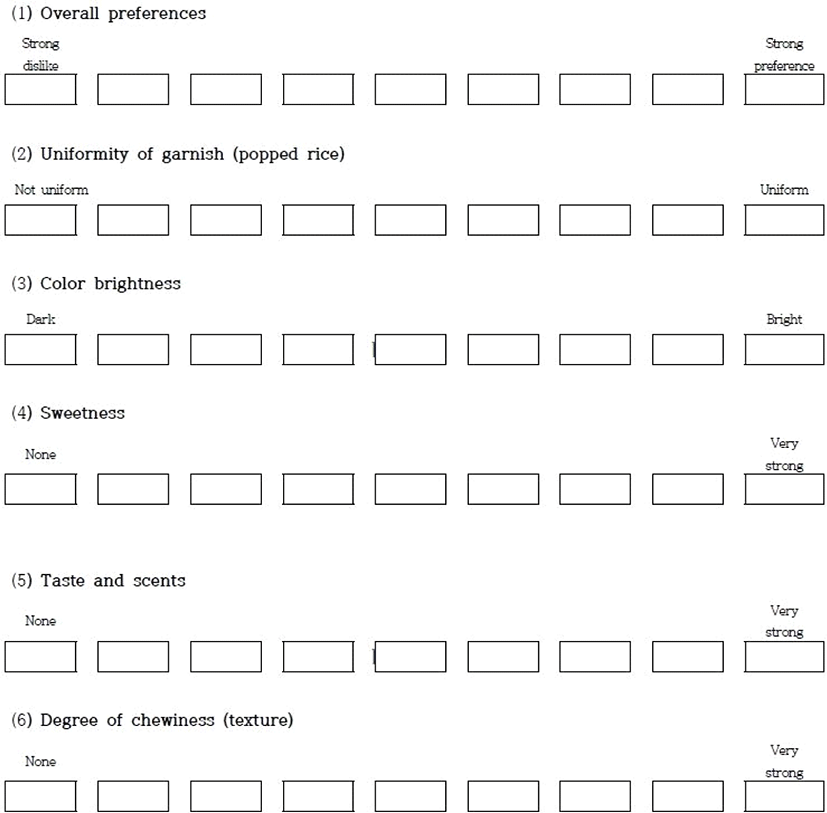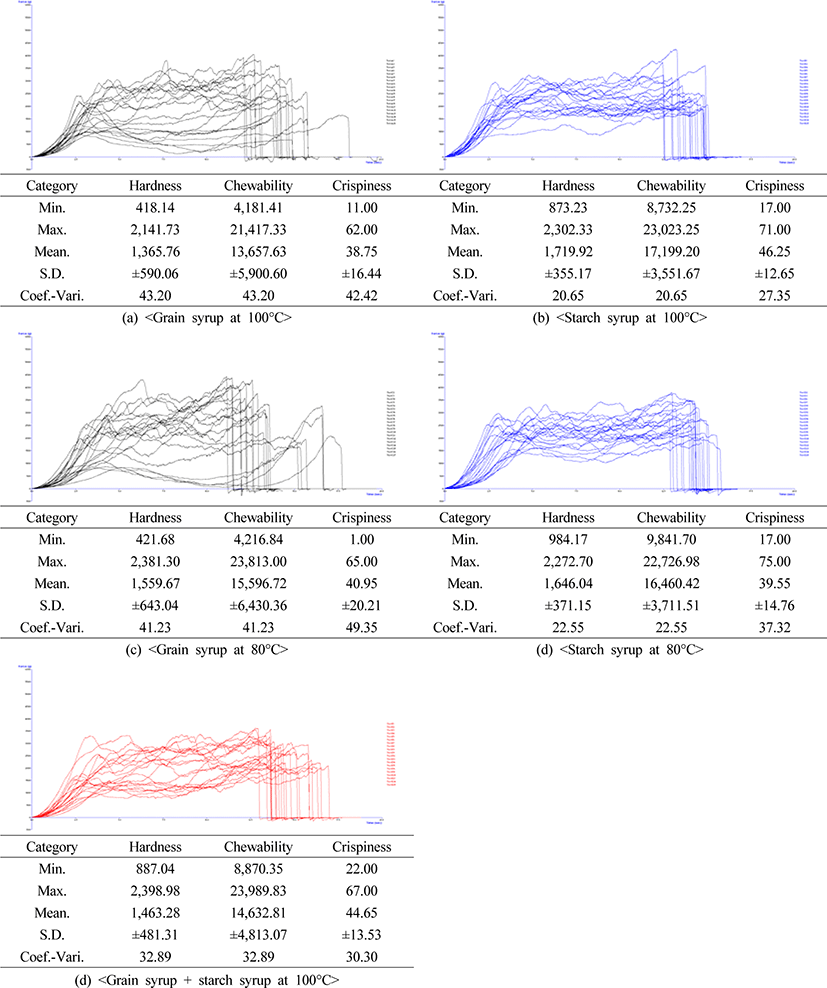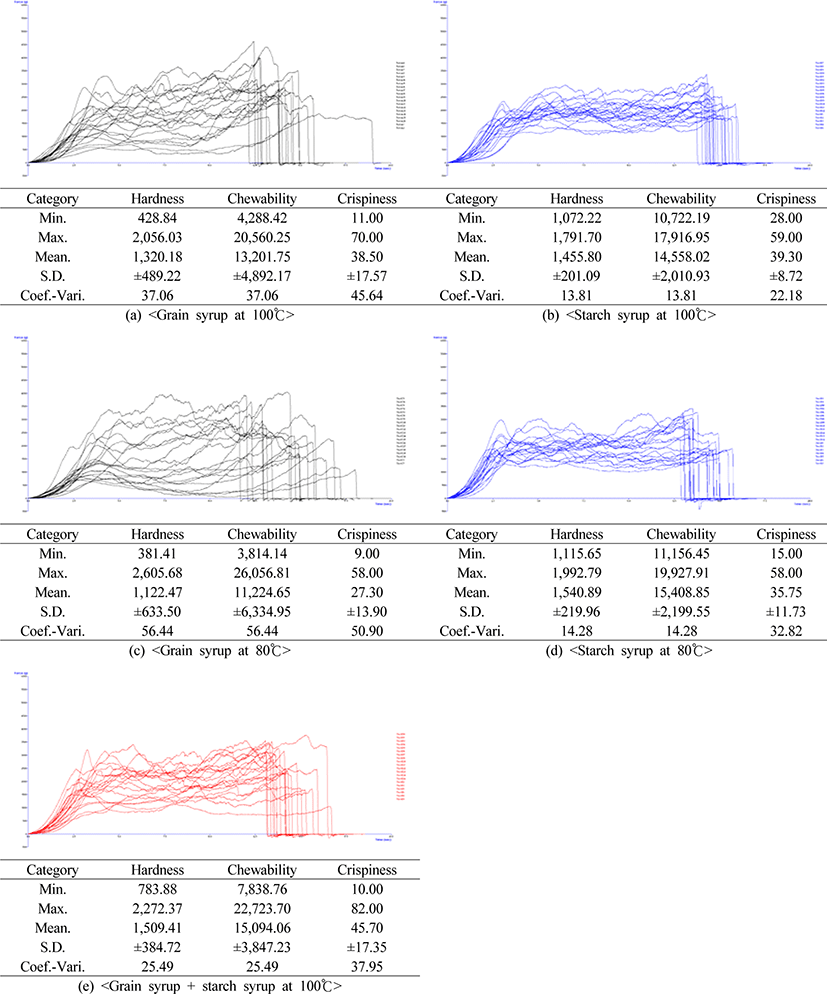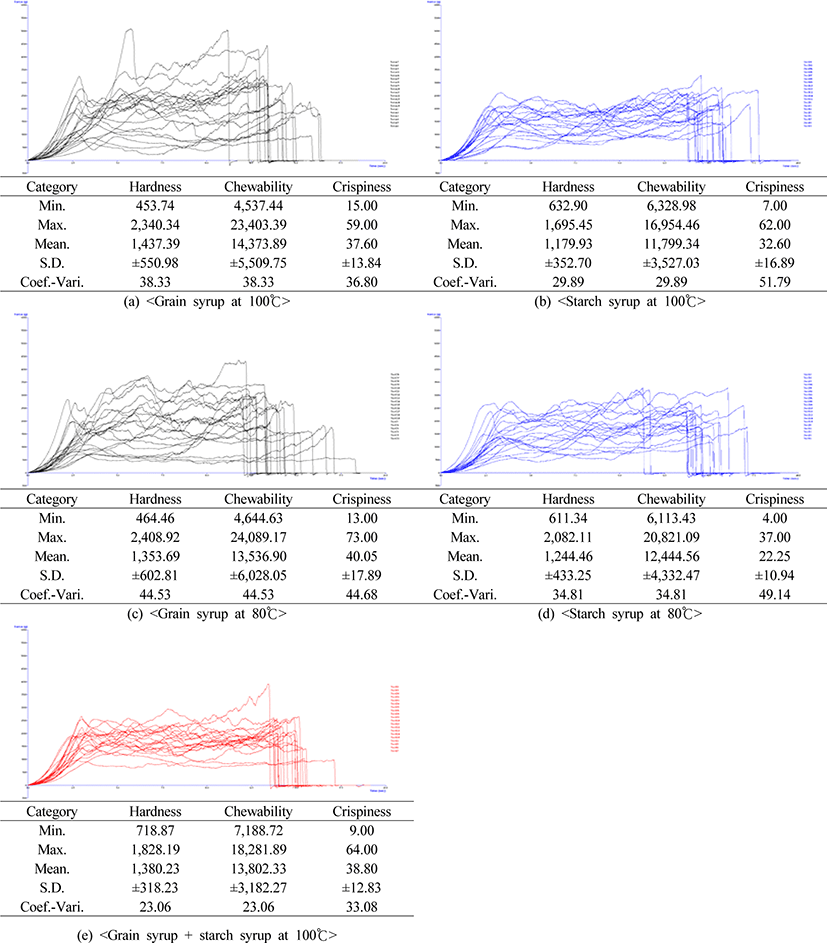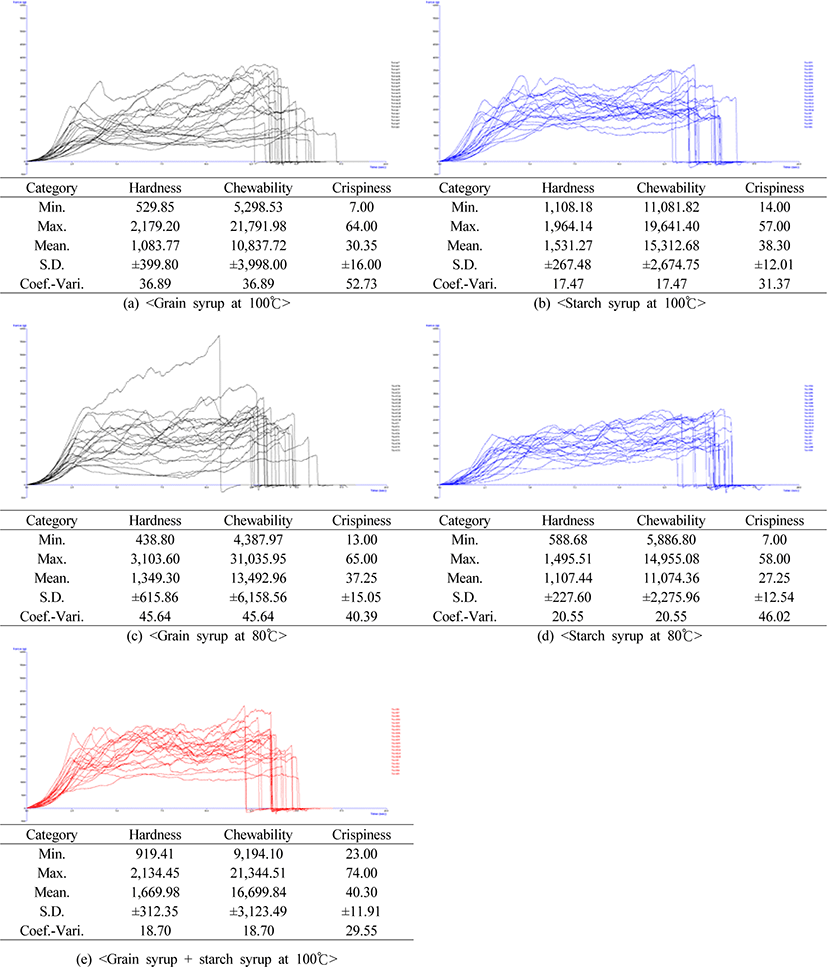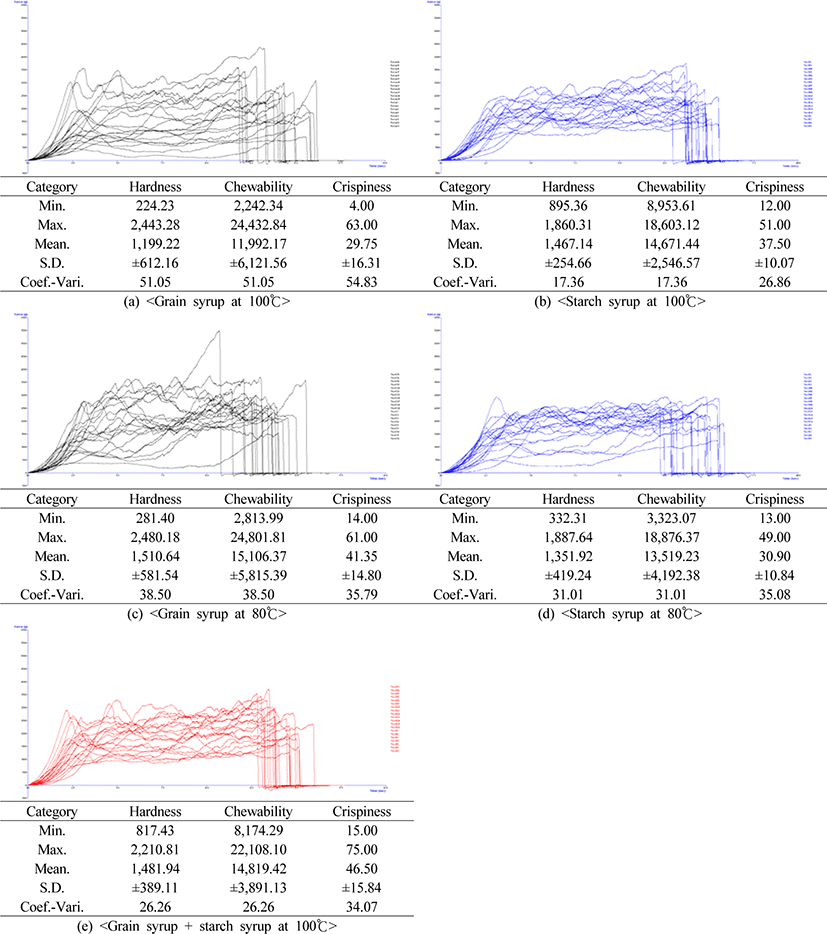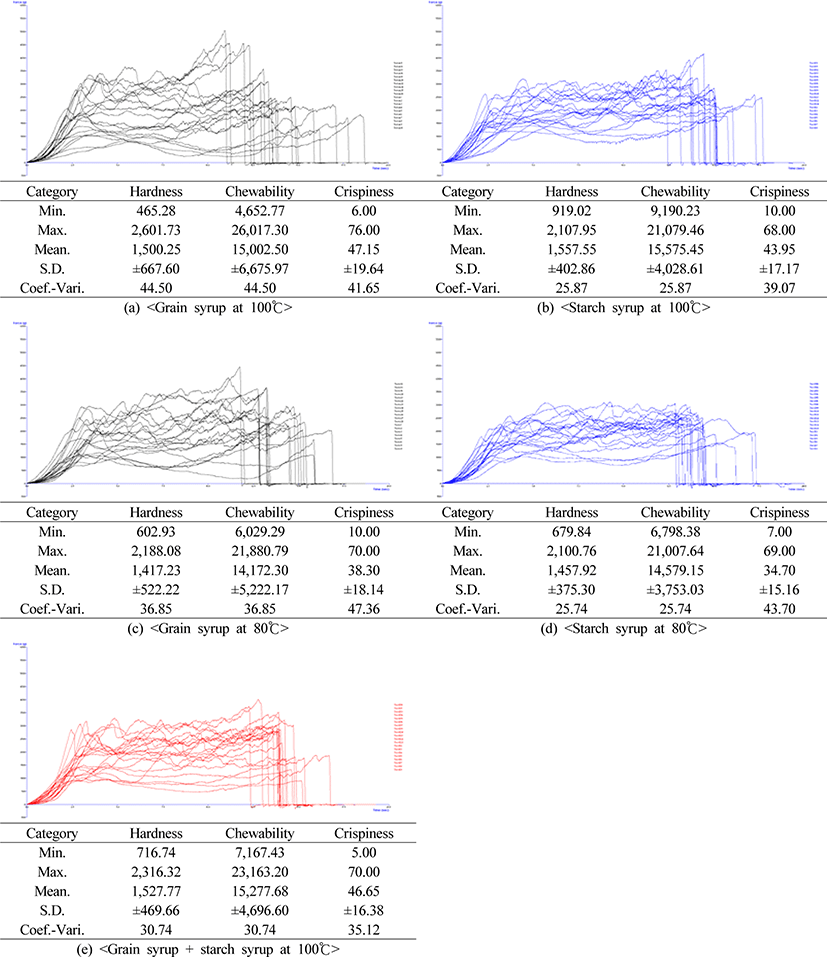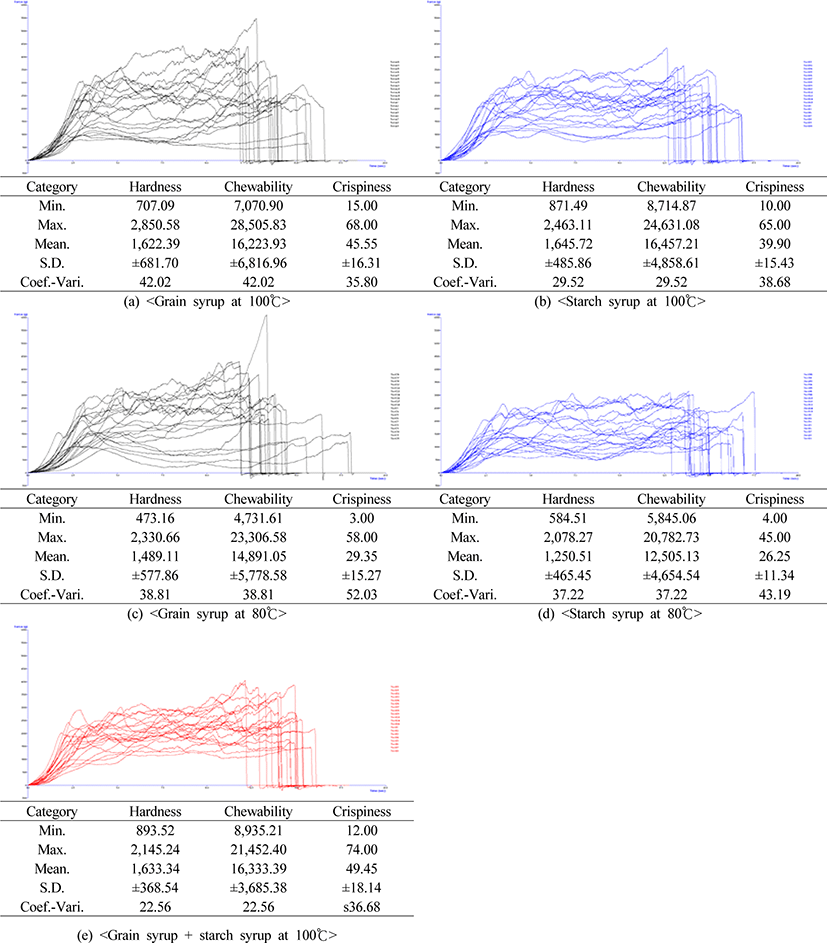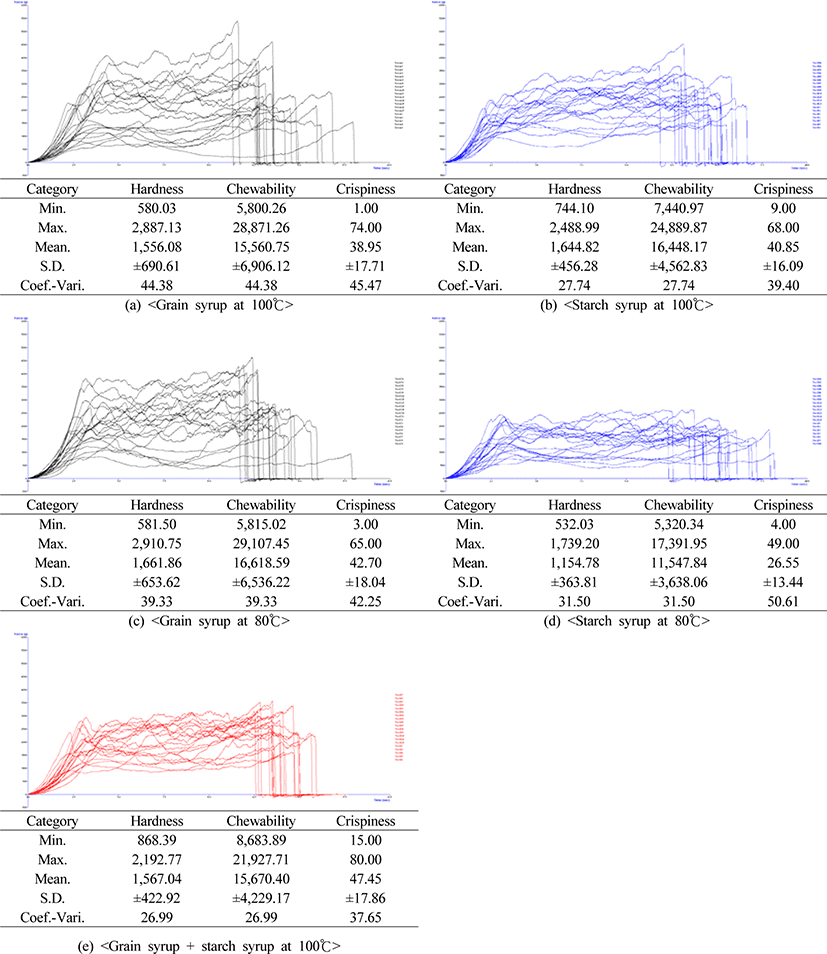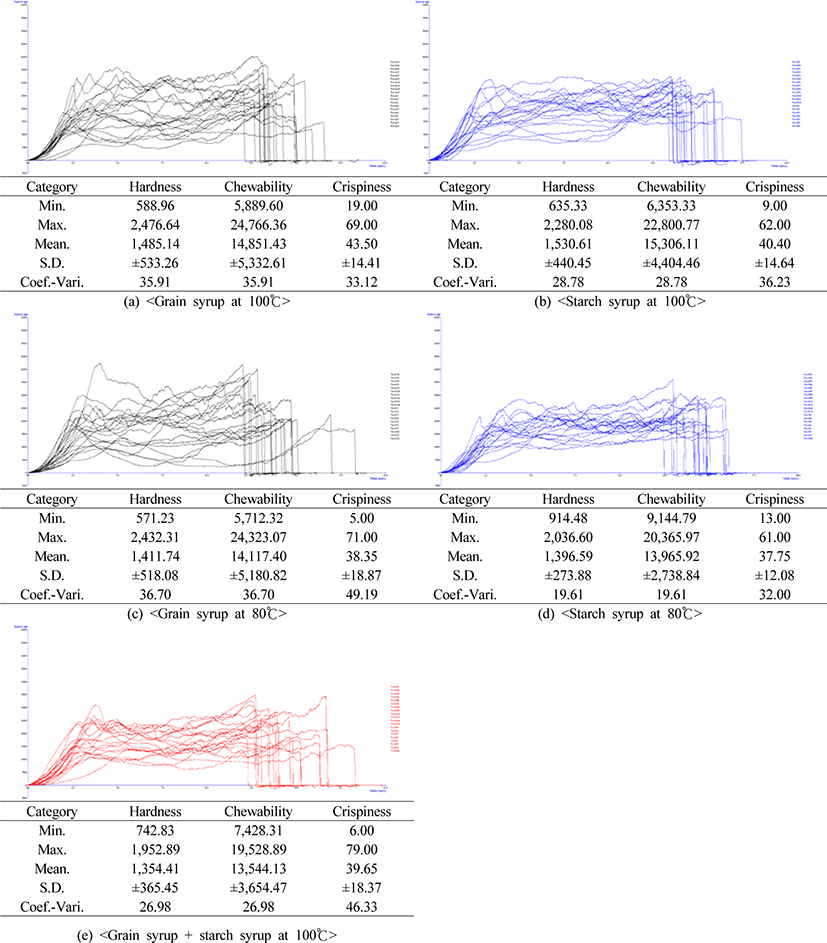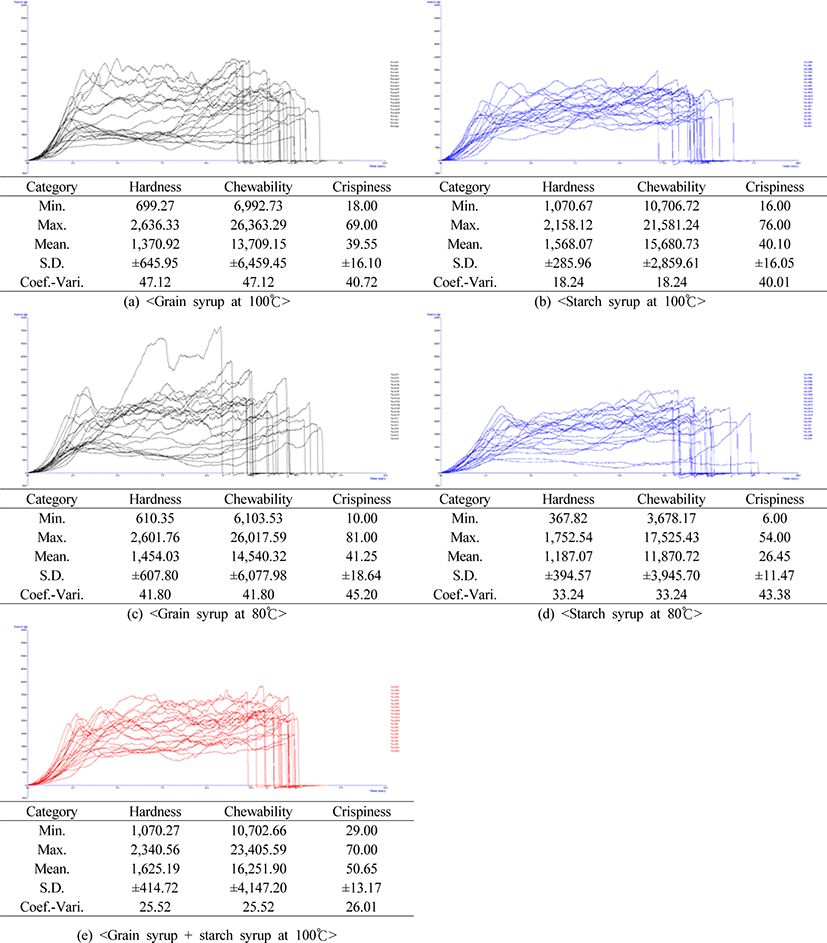I. Introduction
Yugwa is a traditional Korean food that has been passed down by our ancestors. yugwa is made by pulverizing glutinous rice, kneading it in alcohol, steaming, boiling, and mixing it to form a cracker, cutting it in various sizes, and frying it in oil to form the final product (National Agricultural Products Quality Management, 2020). Consumer demand for yugwa continues to increase, and research has been conducted to raise the popularity and consumer awareness of Korean sweets as part of the globalization of Korean food (Lee et al., 1987, 2012; Choi and Cho, 2008). However, research on manufacturing methods to secure competitiveness in the yugwa market is insufficient. The process of making yugwa is largely divided into producing the bandaegi and coating the bandaegi with a mixture of grain syrup, honey, and starch syrup. The quality characteristics of the product differ depending on the sugar used in the coating process. The ancestral recipe uses grain syrup; however, owing to changes in modern people’s tastebuds and manufacturing cost, starch syrup is often used nowadays.
Sugar is applied to the bandaegi after the solution is heated and cooled to a specific temperature, and the quality characteristics of the product vary depending on the temperature of the syrup at application. Currently, producers usually apply sugar between 80°C and 100°C, but there is no research or data to show which temperature is preferred. The purpose of this study was to evaluate the use of syrup (grain syrup, starch syrup, or a mixture of the two) and consumer preferences according to the application temperature of the syrup and storage temperature in order to revitalize the yugwa industry and to suggest ways to enhance market competitiveness.
II. Materials and Methods
Yugwa was produced by a domestic yugwa producer, and test groups were prepared by dividing the yugwa on the basis of different types of sugar used (grain syrup, starch syrup, and mix of grain and starch syrup) and also the temperatures that the sugar was applied (80°C and 100°C) (Table 1).
Consumer preference evaluations were conducted on 30 men and women between 20 and 50 years of age in Jeollabuk-do, and evaluations were made based on the questionnaire in Table 2 using a 9-point scale method in Fig. 1. To evaluate consumer preference according to the type of sugar applied (process 1, 2, and 3; Table 1), only the sugar application temperature of 80°C was considered.
| Category | 20s | 30s | 40s | 50s | Total | Remarks |
|---|---|---|---|---|---|---|
| Number of individuals (名) | 8 | 20 | 3 | 4 | 30 | Male/female ratio 50:50 |
| Ratio (%) | 22.9 | 57.1 | 8.6 | 11.4 | 100 |
To determine the product storage characteristics (type of sugar and sugar temperature at application), the physical properties of the final product were analyzed at 1 wk interval during storage at 30°C (room temperature) and 4°C (refrigeration temperature) for 5 wk. For the analysis, more than 10 samples were used for each treatment. Physical property analysis was performed using a texture analyzer (TA1, Lloyd, USA) equipped with a 25 mm cylinder probe, and the sample was measured according to the following conditions: pretest speed 2.0 mm/s, posttest speed 5.0 mm/s, maximum load, 2 kg,; and head speed 2.0 mm.
III. Results and Discussion
The overall preference was significantly higher for starch syrup than that for grain syrup; however, no significant difference was observed in the overall preference for mixed starch syrup and grain syrup (Table 3). In the case of garnish attachment uniformity, there was no significant difference between the starch syrup alone and mixed grain syrup and starch syrup, but when manufactured using only grain syrup, the garnish attachment uniformity was significantly reduced. The brightness of the final product color was highest when only starch syrup was used, followed by a mixture of grain syrup and starch syrup, and a significantly lower brightness was observed when only grain syrup was used. No significant differences in consumer preferences were observed in the type of sugar used, sweetness, taste, or smell. As for the texture, the degree of acquisition was significantly higher for starch syrup alone and mixed starch syrup and grain syrup. Considering the results of consumer preference, there was no significant difference between sweetness and taste depending on the type of sugar (including both alone and mixed syrups); however, when starch syrup alone was used, the overall preference, color brightness, and textural preference were found to be better. We concluded that utilizing the appropriate amount of mixed syrup when manufacturing yugwa is recommended to improve consumer preferences, as well as quality control.
The physical properties of each treatment process were analyzed according to the storage conditions, and changes in physical properties among samples were observed as the low period increased when manufactured using grain syrup alone. Changes in physical properties among samples according to the storage condition were also observed (Fig. 2~11). The physical properties were analyzed based on storage length and according to the temperature at which the sugar is applied. In both grain syrup and starch syrup, less physical property changes were observed when sugar was applied at 100°C. Taken together, the quality of the product canis be easily maintained by using starch syrup at 100°C during application.
IV. Summary
In this study, consumer preferences were evaluated according to the sugar types used to manufacture yugwa, changes in physical properties, and storage temperature. In conclusion, it was easier to maintain the quality according to the storage period, and consumer preference was higher whenusingfor mixed grain syrup and starch syrup or starch syrup alone than when grain syrup was used alone to manufacture yugwa. In addition, applying the sugar at 100°C maintains quality even though the storage period is increased, so it would be better to apply sugar at 100°C during yugwa manufacturing.







